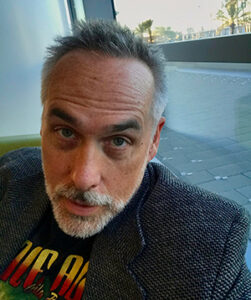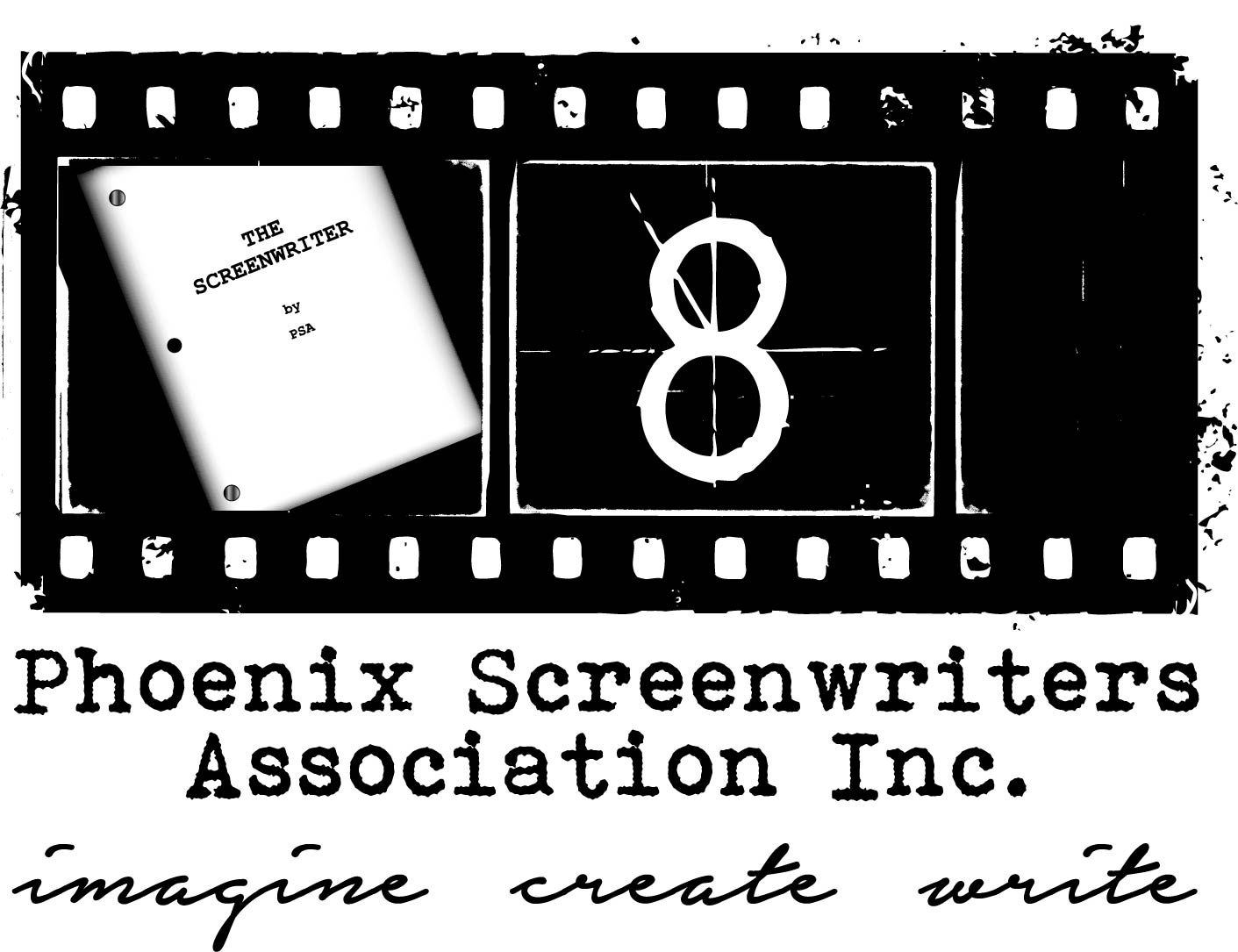Vizzini said, “Go back to the beginning.”
by Bill True – Writer and Head of Dramatic Writing at the Scottsdale School of Film+Theatre
 It’s one of my favorite moments in the immortal The Princess Bride.
It’s one of my favorite moments in the immortal The Princess Bride.
[note: if you haven’t seen The Princess Bride yet, what is wrong with you? Hahahah! Seriously, though… You should watch it. Like. Now. This post will still be here when you’re done.]
All seems lost. The fair Buttercup is imprisoned in the castle, seemingly doomed to marry the sinister Prince Humperdinck. Our hero, Westley, is all-but dead in Count Rugen’s torture chamber.
And my favorite character, Inigo Montoya, deals with his own failure…by drinking himself into a stupor.
But…
A decision Inigo made off screen just before this is the impetus that propels our heroes to eventually save the princess and save the day.
I am waiting for you, Vizzini! You told me to go back to the beginning. So I have.
Inigo has gone back to the place where his business with Vizzini began. Back to the foundation of it all. The starting point. And in this single, most brilliant (though dubious in its intentionality) action, Inigo set himself and his friends up to win in the end.
Now…
What the hell does this have to do with screenwriting?
When people read your script, are you getting feedback in the vein of…
I had difficulty connecting with or caring for the character(s) and their journey?
The plot’s interesting, but I don’t understand why the characters are making the decisions they’re making?
…or, my personal favorite…
I get what the movie is about (meaning the plot or premise), but I have no idea what this movie is really about?
If so, you probably feel like out pal, Inigo. Like a failure. Like, how the heck to I fix that? Instead of drinking yourself into a stupor, though, I have a better idea.
Go back to the beginning.
I don’t mean go back to the beginning of the script, though. I mean go back to the core of the story.
[note: in this article, I am focusing specifically on feature film stories, but a version of what I’m talking about applies to every kind of story.]
The issue is likely that your story’s “theme” is ill-defined, under-defined, or missing in action. I put “theme” in quotes, by the way, because I believe it’s a confusing and too nebulous a term for the thing I’m about to talk about, even though it’s the word most people use to identify this thing. So put a pin in it for a bit.
A lot of new writers mistakenly think that “story” and “plot” are synonymous. They’re not. In fact, none of the sixty-seven synonyms for “story” on thesaurus.com are “plot.”
So what is a story, and what does it have to do with “theme?”
In my screenwriting classes, I tell students that the process by which stories unfold mimics the one people go through to learn important life lessons. In the case of movies, these lessons are of an emotional nature…about things like forgiveness, letting go, acceptance, trust, and the so on.
As in life, at the beginning of the story, our hero needs to learn this lesson, but they don’t know that yet. We, the audience, see them in interactions that clue us in that the character needs to learn it, but the character is, well…clueless.
Also as in life, something happens through the hero’s lived experience (usually after they hit “rock bottom”) that helps them realize there’s a lesson to learn from this experience. Then they start to learn and apply the lesson, and this is the catalyst that helps them (oversimplification alert!) “prevail” in the end and live in the benefit of having done all that.
[note: I know, I know…not all stories end happily. I am talking about the most basic model of story, though. In more advanced forms, in the hands of seasoned creators, stories can crafted to subvert this norm to become (as I refer to it in my classes) “structurally eccentric.” Like with all crafts, I encourage new writers to get good at the basics before moving onto the hard stuff. Most new writers I run into get into trouble because they’ve gotten too far over their skis trying to write a story that’s beyond their current experiential reach.]
In other words, stories are about change. About transformation. Someone that needs to learn an important emotional lesson and doesn’t know it, and the things they experience along the way help them learn and apply that lesson. As a result, they prevail in the end and get to live in the benefit of all that when all is said and done.
That lesson..? That is the “theme” people are talking about. And that’s really what your movie is “about.”
In my screenwriting classes, I tell students if they don’t know the lesson for their movie, don’t keep going until they do.
Because that, my friend, is “the beginning.”
If you’re getting notes like the ones above, you probably don’t have a good handle on the lesson of your movie.
Why is this important?
Let’s get back to plot. I also tell students that movies are about one character that goes on one adventure to learn one lesson. Plot is the unfolding of the adventure. The process by which the character goes about trying to achieve the physical objective of the adventure.
But here’s the thing about plot. It doesn’t drive the movie forward. A character’s decisions drive that. Which is why so many seasoned writers talk about character driving plot.
What they mean is that a character’s decisions drive the plot. And a character’s decisions at any point in a story are subject to their cluelessness or rejection of the lesson they are in the thick of learning. For two-thirds of the movie (from the beginning of Act One to the end of Act Two), a character’s decisions will be “flawed” because they’re made from the standpoint of someone who doesn’t get it yet. And if you’ve built your story right, you’ve designed an adventure (and accompanying inciting incident that acts at the call to adventure) that requires a hero who would have already learned this lesson before starting out in order for their objective to be met with any semblance of ease or calm.
But that would be boring.
What we want to do is design an adventure so that every time your character faces an important decision, the “right” path eludes them. They react in accordance with their cluelessness, so even as they move closer to achieving their physical objective, they do it in a way that makes their next move and the move after that even more fraught and challenging and dangerous. As a result, they’re increasingly frustrated and desperate, so future decisions are going to be even more erratic and problematic.
This is how you build tension and increase conflict for your characters in your stories. And this is how you get them to the point where, at the end of the second act, they are the architects of their own hitting rock bottom.
On the other side of all that, once your character is clued into the lesson they need to learn, Act Three is all about them figuring out how enact that lesson in practical terms. In making peace with the people they need to make peace with. In getting their team back together. In finding the courage and fortitude to do something neither they, nor any other character (nor the audience, for that matter) ever thought the character would be able to do in order to prevail in the end.
That, in a nutshell, is story.
Listen…there’s a lot more to it, but that’s the basics. That’s the beginning. So if you’re getting the kind of notes I mentioned above, be like Inigo.
Go back to the beginning. Figure out the lesson of your movie, then make certain that the kinds of decisions your hero makes (in Act One and Two especially) are the opposite of those one who understands and accepts the lesson of the movie would make. This will ratchet up conflict and tension in your story, and it will help your audience invest in your character.
And it will, I promise, save the day.
Okay. Now…about that six-fingered man…
Bill True’s debut feature, Runaway, was hailed by critics as “Brilliant” and “Hitchcockian” as it premiered to universal accolades at Tribeca and Toronto. It went on to screen worldwide at Avignon, Woodstock, Vail, Palm Springs, and other top festivals. Bill took the top prize at the Austin Film Festival for his work on Runaway, which was subsequently released by eOne Films.
Since then, Bill has developed feature and television projects with The Film Collective, NBA Entertainment, Warner Horizon Television, Veritas Entertainment, More/Medavoy Productions, eOne Television, and more. He was honored as a Bush Artists Fellowship for writing grant recipient and, most recently, was selected to participate in the acclaimed Yale Writers Workshop.
Bill has been a featured panelist and jurist at the Austin Film Festival and the Screencraft Writers Summit. He’s been a featured speaker for industry organizations including the Independent Feature Project, Women in Film, the Tribeca Film Festival, the Phoenix Screenwriters Association, and the Northwest Screenwriters Guild.
Last year, he launched a new podcast called Get Your Story Straight with fellow screenwriter and screenwriting professor Karl Williams. In the vein of NPR’s Car Talk, Bill and Karl chat with feature and TV writers, and help them fix vexing story problems with their works in progress.
In addition to his work in Hollywood, Bill is Head of Dramatic Writing at the esteemed Scottsdale School of Film+Theatre. From 2015 to 2024, Bill also served as Department Chair for SSFT. Under Bill’s leadership, SSFT was named one of industry-leading entertainment publication Variety’s “Top Film Schools in North America” in 2023 and 2024.
